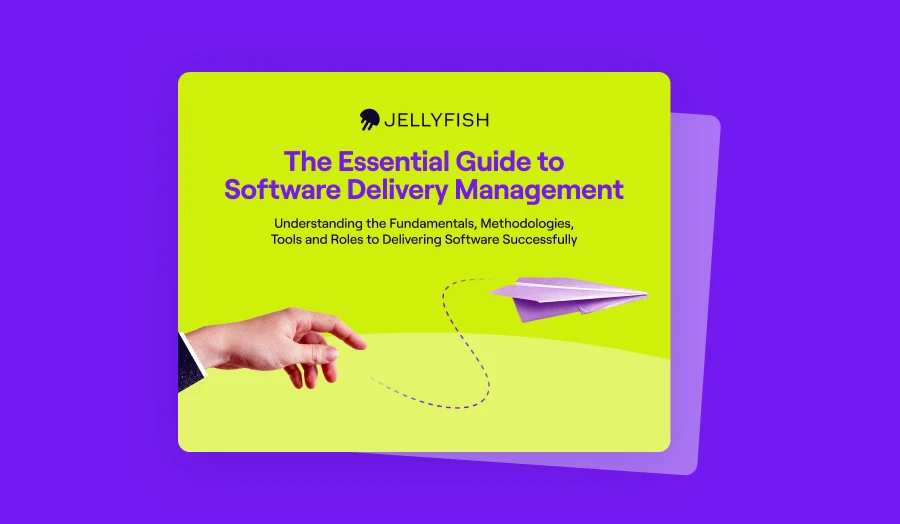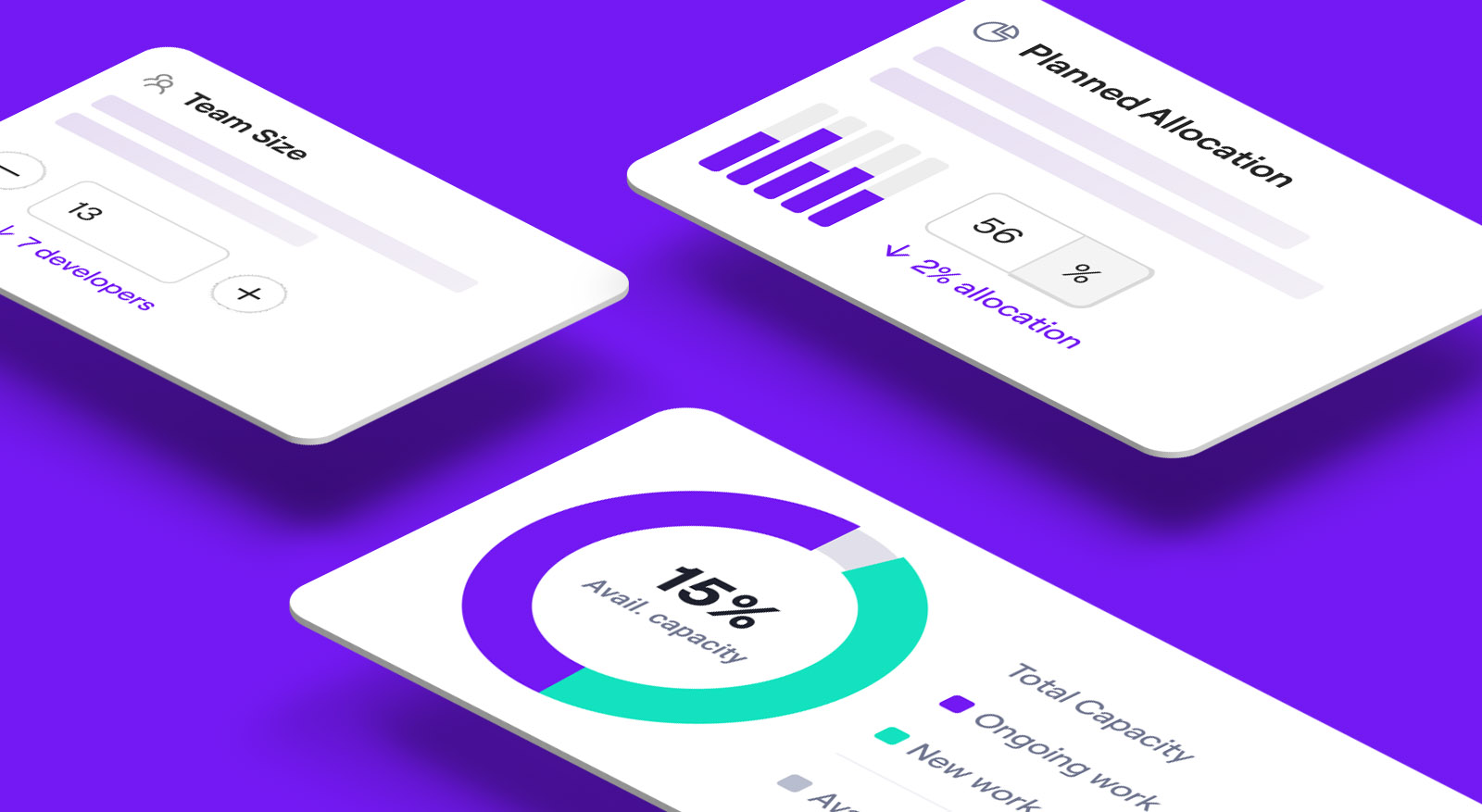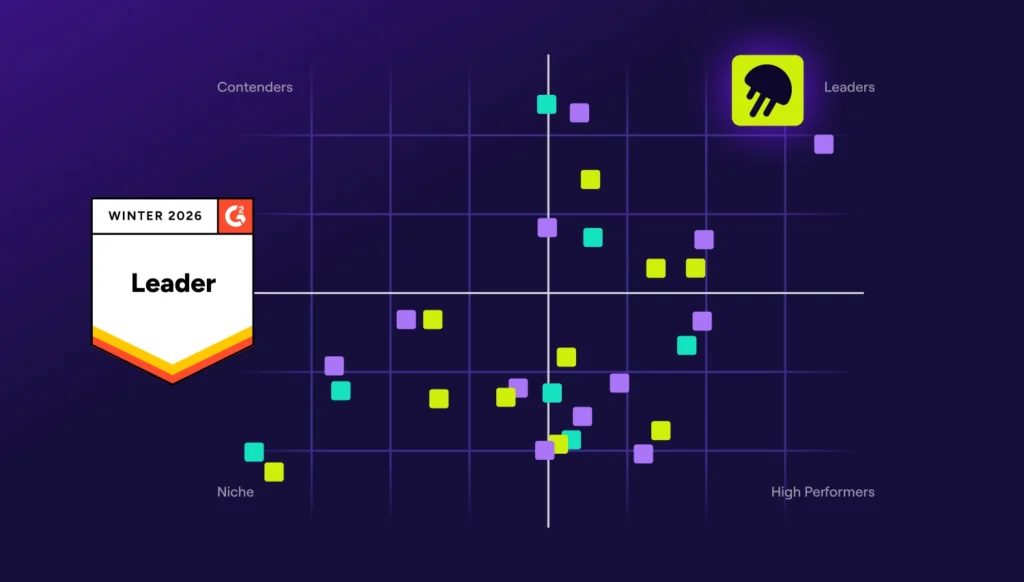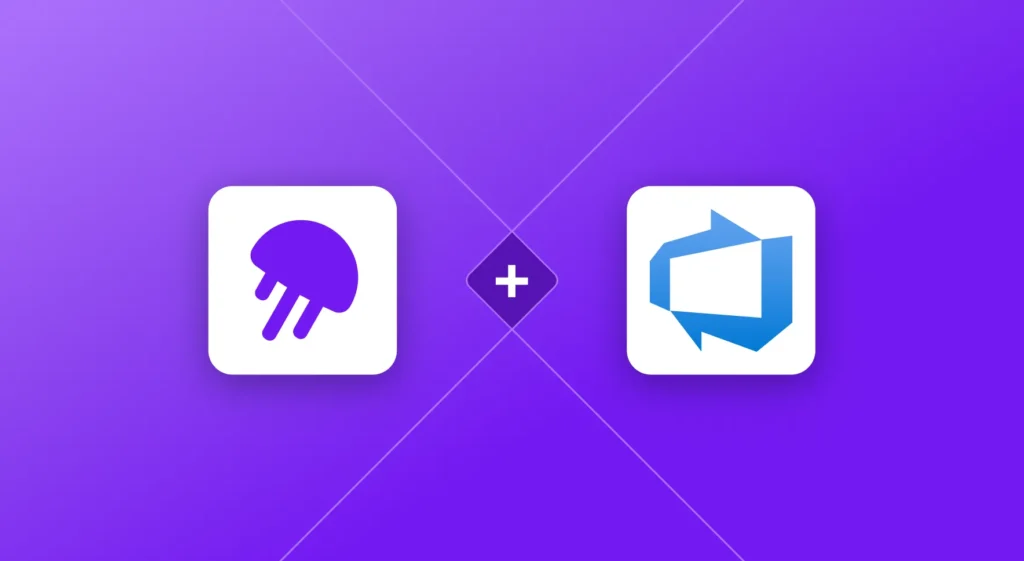Today we’re excited to announce general availability for Capacity Planner. Capacity Planner enables organizations to set realistic quarterly workloads – bringing clarity and confidence to the planning process at scale.

Why is Capacity Planning Important?
Why is Capacity Planning Important?
Many engineering leaders struggle to predict team capacity for upcoming quarters, making it difficult to set achievable goals and avoid overcommitment. Without clear visibility into what can be accomplished with existing resources, engineering capacity planning often relies on spreadsheets – resulting in fragmented, manual processes that fail to integrate with the broader engineering infrastructure.
Teams also face challenges in estimating carryover work, balancing new initiatives, and ensuring that roadmaps remain realistic and adaptable. Capacity Planner addresses these pain points by providing an automated, data-driven approach that helps organizations improve quarterly and annual planning, align commitments with actual capacity, and drive more predictable delivery outcomes.
What’s more, Capacity Planner is designed to standardize capacity calculations, ensuring accuracy and reliability through data-driven insights. When everyone follows the same methodology, plans remain consistent and trusted across the organization. By leveraging your organization’s historical and current data, Capacity Planner enables you to make informed decisions, align capacity with strategic goals, and ensure deliverables are completed predictably.

The Essential Guide to Software Delivery Management
Understanding the Fundamentals, Methodologies, Tools and Roles to Delivering Software Successfully
Read the GuideHow Does Jellyfish Calculate Capacity?
How Does Jellyfish Calculate Capacity?
Jellyfish calculates capacity for a planning period by incorporating multiple critical factors including:
- Ongoing deliverables
- Historical and current team performance
- Planned work
These inputs are combined with dynamic variables you can adjust yourself or have Jellyfish automate including scope, team size, and effort, allowing for real-time scenario planning and adjustments.
The outcome is a clear, data-driven understanding of workload feasibility, effort estimations, and delivery projections.
By accurately assessing capacity, organizations can prevent burnout, improve team well-being, and ensure alignment between resources and strategic priorities. Teams set and achieve realistic delivery expectations, adapt to shifting priorities, and ultimately drive higher engineering productivity and project success.
“We use Jellyfish heavily for delivery analytics. Capacity Planner looks freakishly close to our spreadsheet, so it feels familiar. ”
What’s Included in Capacity Planner
Capacity Planner core capabilities give users the ability to:
- Account for expected team size and allocation toward planned work
- Create and share multiple plans across teams to weigh different options. For example, share with supporting roles (Program Managers, Directors, etc.) who work across multiple teams, can make resource trade-offs collaboratively
- Enable an automated, consistent, and standardized way to calculate capacity across teams to build and ensure trust
- Provide an accurate estimate of how much carryover work teams will face
- Support users to add work from their backlog to the plan, as well as add and estimate new work (not yet in Jira)
- Allows users to opt deliverables “in” or “out” to quickly explore what-if scenarios
- Visualize capacity in a straightforward way, showing the contribution of both new and ongoing work to the overall plan
- Change scope, number of engineers, and effort manually or automatically to assess different realities
Coming Soon to Capacity Planner
Coming Soon to Capacity Planner
Effective project planning requires more than just understanding team capacity – it demands visibility into the specific skills needed to execute the work. Without accounting for engineering skill sets, leaders risk creating infeasible plans that lack the necessary front-end, back-end, or specialized expertise.
Our upcoming Skill Set Matching feature will map team skills against project requirements, identifying potential mismatches, and ensuring the right expertise is allocated to each initiative. Jellyfish users can look out for this added capability this Spring.
Ready to get started with Capacity Planner?
Ready to see Jellyfish’s new Capacity Planner in action? Book a demo with our team today.
About the author

Amélie is a Senior Technical Product Marketer at Jellyfish.





